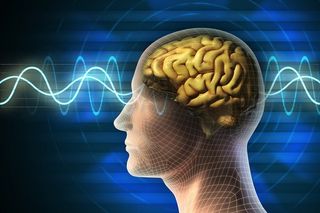Scientists Can Now Tell If Someone Is Dreaming from Their Brain Waves

People who are in a deep slumber may not be able to say whether they're dreaming, but their brain waves might.
In a new study, scientists say they can predict whether people are dreaming by looking at the brain activity in a region at the back of the brain, which they dub the posterior cortical "hot zone."
"Monitoring this posterior 'hot zone' in real time predicted whether an individual reported dreaming or the absence of dream experiences … suggesting that it may constitute a core correlate of conscious experiences in sleep," the researchers wrote in the study, published online April 10 in the journal Nature Neuroscience. [7 Mind-Bending Facts About Dreams]
For many years, scientists thought that dreaming occurred mostly during a stage of sleep known as rapid eye movement, or "REM," sleep. But more recent studies have found that many people also report dreams when they are woken up during a different stage of sleep called non-REM sleep.
In the new study, the researchers monitored the brain waves of 46 people while they slept, using electroencephalography (EEG), a method of recording the brain's electrical activity. The researchers woke up the participants at different stages of sleep, and asked them whether they were dreaming just before they woke up. The researchers looked for differences in brain waves between the people who said they had just been dreaming versus the people who said they had not.
The researchers found that, when the participants were dreaming, they showed a decrease in low-frequency brain waves, and an increase in high-frequency brain waves, in the posterior hot zone, compared with when they weren't dreaming. They found this pattern regardless of whether the participants were dreaming during REM or non-REM sleep.
Using this brain wave pattern, the researchers found that they could predict whether a person was dreaming during non-REM sleep with about 90 percent accuracy, the report said.
Sign up for the Live Science daily newsletter now
Get the world’s most fascinating discoveries delivered straight to your inbox.
The researchers also found that a person's pattern of brain activity could sometimes reveal a bit about what they had been dreaming about. For example, if there were faces in a person's dream, there was an increase in high-frequency brain waves during REM sleep in an area of the brain typically used to process information on faces.
The researchers said their findings may have implications beyond sleep, for the study of consciousness itself. That's because activity in the "hot zone" was linked with "conscious" experiences during sleep (dreams), as opposed to unconsciousness, or dreamless sleep, they said.
Original article on Live Science.

Rachael is a Live Science contributor, and was a former channel editor and senior writer for Live Science between 2010 and 2022. She has a master's degree in journalism from New York University's Science, Health and Environmental Reporting Program. She also holds a B.S. in molecular biology and an M.S. in biology from the University of California, San Diego. Her work has appeared in Scienceline, The Washington Post and Scientific American.
